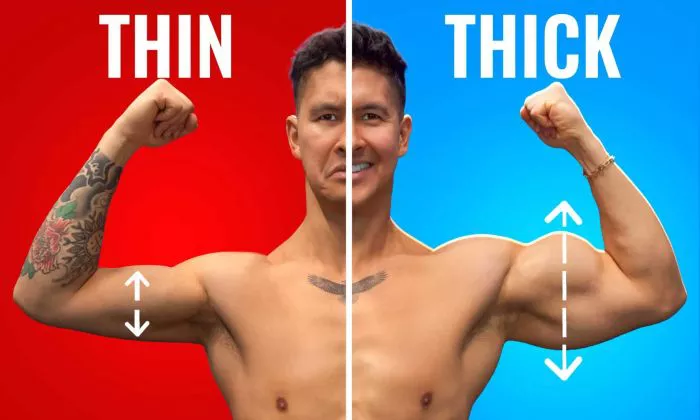Building muscle in the arms can be a challenging endeavor for many individuals, often leading to frustration and disappointment despite consistent efforts in the gym. While the arms may seem like a straightforward muscle group to target, several factors contribute to the difficulty of achieving significant muscle growth in this area. In this comprehensive guide, we’ll explore the reasons why it’s often challenging to build muscle in the arms and provide strategies for overcoming these obstacles.
1. Genetics
Genetics play a significant role in determining muscle size and shape, including the potential for muscle growth in specific areas of the body. Some individuals may naturally have a predisposition for larger, more defined arm muscles, while others may struggle to see significant gains despite their best efforts. While genetics are beyond our control, understanding and accepting your genetic predispositions can help manage expectations and focus on maximizing your potential through effective training and nutrition strategies.
2. Lack of Progressive Overload
Progressive overload is essential for muscle growth, regardless of the muscle group being targeted. To stimulate muscle hypertrophy, you need to continually challenge your muscles by progressively increasing the intensity, volume, or resistance of your workouts over time. Many people underestimate the importance of progressively overloading their arm muscles and may stick to the same exercises, weights, and repetitions for extended periods. Without sufficient stimulus for growth, the muscles are unlikely to experience significant hypertrophy.
3. Inadequate Training Volume and Frequency
Building muscle requires sufficient training volume and frequency to stimulate growth and adaptation. Some individuals may not train their arms with enough frequency or volume to elicit significant muscle growth. Additionally, focusing solely on compound movements such as bench presses, rows, and pull-ups may not provide enough direct stimulation to the arm muscles, leading to underdevelopment. Incorporating targeted arm exercises into your routine and increasing training volume and frequency as needed can help address this issue.
4. Incorrect Exercise Selection and Technique
Choosing the right exercises and performing them with proper technique are crucial for effectively targeting the arm muscles and promoting muscle growth. Many people may focus primarily on isolation exercises such as bicep curls and tricep extensions without considering other important factors such as grip variations, range of motion, and tempo. Additionally, using improper form or momentum to lift heavier weights can reduce the effectiveness of the exercise and increase the risk of injury. Learning proper exercise technique and incorporating a variety of exercises that target all aspects of the arm muscles can maximize muscle growth and development.
5. Insufficient Nutrient Intake
Nutrition plays a critical role in muscle growth and recovery, and inadequate nutrient intake can hinder progress in building arm muscles. Consuming insufficient protein, which is essential for muscle repair and growth, can limit muscle protein synthesis and inhibit muscle hypertrophy. Additionally, inadequate overall calorie intake or poor nutrient timing may prevent optimal muscle recovery and adaptation. Ensuring you’re consuming enough protein, carbohydrates, and healthy fats to support muscle growth, as well as timing your meals and snacks appropriately around your workouts, can help optimize muscle-building efforts.
6. Lack of Rest and Recovery
Muscle growth occurs during periods of rest and recovery, not during workouts. Overtraining or insufficient rest between workouts can impede muscle recovery and adaptation, leading to suboptimal gains in muscle size and strength. Additionally, inadequate sleep, chronic stress, and poor recovery practices such as neglecting stretching, foam rolling, and other recovery modalities can further hinder muscle growth. Prioritizing rest and recovery by incorporating rest days into your training schedule, prioritizing quality sleep, managing stress levels, and practicing effective recovery techniques can support muscle growth and overall well-being.
7. Plateauing and Adaptation
The body is incredibly adaptive and will eventually adapt to the stresses placed upon it, leading to diminishing returns in muscle growth if the training stimulus remains constant. This phenomenon, known as plateauing, can occur when individuals fail to progressively overload their muscles or vary their training routine over time. To overcome plateaus and continue making progress in building arm muscles, it’s essential to regularly reassess and adjust your training program, incorporate new exercises and training modalities, and challenge your muscles in different ways to stimulate further growth and adaptation.
Conclusion
Building muscle in the arms can be challenging due to a combination of factors, including genetics, training variables, nutrition, and recovery practices. However, with the right approach and consistency, significant gains in arm muscle size and strength are achievable for most individuals. By implementing progressive overload principles, optimizing training volume and frequency, selecting appropriate exercises and technique, prioritizing nutrition and recovery, and addressing plateaus and adaptation, you can overcome obstacles and effectively build muscle in your arms. Remember that muscle growth takes time, patience, and dedication, so stay focused on your goals and trust in the process as you work towards developing stronger, more defined arms.
Related Topics:
What Pills Are Good to Lose Belly Fat
Is CorePower a Good Workout? Exploring the Benefits and Varieties
Does Bhujangasana Reduce Belly Fat?


